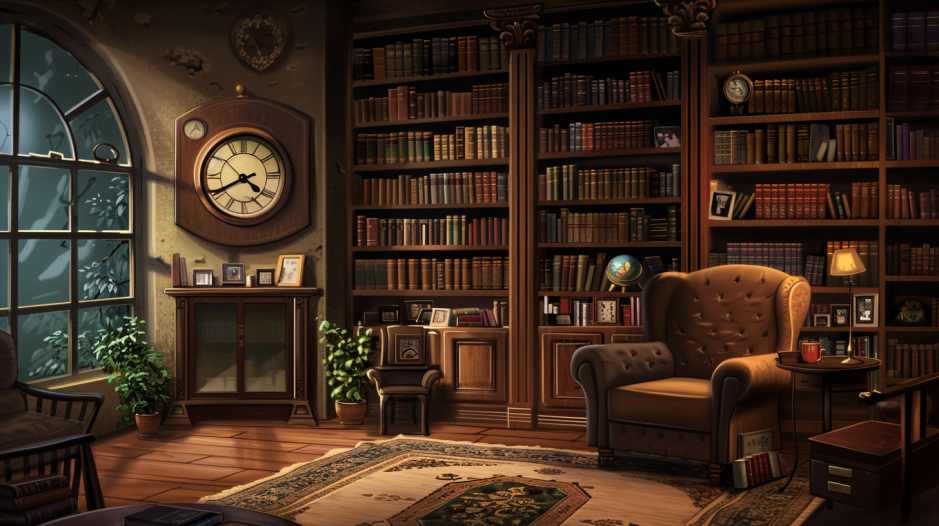
free shipping on orders over $25
We’re having a sale on all our products. Enter your email below to be notified about future sales.


We’re having a sale on all our products. Enter your email below to be notified about future sales.


Diversion safes are like your secret weapon against burglars. They transform everyday items into vaults for your valuables, cleverly hiding them right in front of you. These safes play on a thief’s assumptions and time pressure—by hiding items where they least expect, it makes their quick escape much riskier. Whether you go for store-bought options that seamlessly blend into your decor or create your own, the key is in being subtle and realistic. Place them strategically so they are invisible yet easily accessible to you. By incorporating these safes into your home, you discreetly enhance your security. Find out how these hidden gems can give you even more peace of mind.
Diversion safes are containers that cleverly disguise your valuables, blending in with everyday items in your home to keep them safe. People have been hiding their treasures creatively for centuries, using ordinary objects to outsmart thieves and invaders. Remember the classic hollow book or the lesser-known fake electrical outlet? These are not new inventions; they have been around for ages, evolving to meet modern needs.
When you’re thinking about using diversion safes as part of your home security plan, it’s essential to understand the legal aspects. It’s completely fine to own and use these safes, but you need to ensure they are used ethically and within the law. For instance, storing illegal substances or items in a diversion safe could get you in trouble, even if the safe itself is legal. The key is to protect your valuables without stepping into legal gray areas. So, as you outsmart potential burglars, you’re also staying on the right side of the law, making sure your security tactics don’t accidentally become legal problems.
Diversion safes work effectively because they play on a burglar’s psychology, leveraging the assumption that valuable items aren’t hidden in plain sight.
You see, when a thief enters your home, they’re operating under immense pressure. Their risk perception skyrockets, knowing that every second spent inside increases their chances of getting caught.
Understanding how burglars think, you’re now ready to explore the best options for keeping your valuables hidden in plain sight. The market offers a variety of diversion safes designed to blend seamlessly into any environment, each constructed from various safe materials to mimic everyday items. These safes range from book safes, which use real paper edges, to soda can safes made with the same weight and graphics as their genuine counterparts.
When considering safe materials, durability and realism are key. Metal safes disguised as household cleaning products offer robust protection, while those crafted from plastic or composite materials can replicate food containers or personal care items. The choice largely depends on where you plan to place them, but remember, the goal is to make sure they don’t stand out.
Price comparison is another important factor. Diversion safes are generally affordable, with prices varying based on size, material, and complexity of the disguise. You can find basic models for as little as $10, while more elaborate designs, especially those mimicking high-value items or with improved lock mechanisms, may cost upwards of $50. Balancing cost with effectiveness is essential; the best option is the one that offers reliable security without drawing attention.
Choosing the right spots for your diversion safes can greatly enhance the security of your valuables. You’ve picked out the perfect diversion safes, now it’s important to integrate them seamlessly into your home to fool potential thieves.
Start by considering color coordination. Your diversion safe should blend in with its surroundings. If you’ve got a book safe, place it on a shelf with similar-sized and colored books. This little detail can make a significant difference in ensuring it doesn’t stick out.
Visibility considerations are equally important. You might think hiding your safe in plain sight is counterintuitive, but that’s exactly what makes it effective. For instance, a kitchen can safe should sit among actual canned goods in your pantry. However, don’t place it at eye level or in the front row. Tuck it away slightly behind other items. The goal is to make your safe blend in as naturally as possible with its environment.
Crafting your own diversion safe offers a creative and effective way to protect your valuables from prying eyes. The key to a successful DIY diversion safe lies in your material choice and crafting tips that guarantee your hidden compartment blends seamlessly into its surroundings.
For starters, consider everyday items that don’t attract attention for your material choice. Old books, empty cleaning product bottles, or even false electrical outlets can serve as perfect bases for your diversion safe. When selecting your base, think about where it’ll sit in your home. An old cooking book in the kitchen or a shampoo bottle in the bathroom are logical choices that won’t seem out of place.
Crafting tips to keep in mind include making sure your safe is accessible yet not too obvious. For a book safe, carefully cut out the center of the pages to create a hollow. For a bottle, clean it thoroughly and cut a hidden compartment. Make sure whatever method you choose, the item can close or appear undisturbed, maintaining the illusion of just another household item.
After crafting your DIY diversion safe, it’s essential to ensure it remains undetected by seamlessly blending it into its environment. This is where color matching and material choice come into play, ensuring your safe doesn’t stand out conspicuously. You’ve got to look at the room it’s in and match not just the color but also the texture and sheen of surrounding objects. If your room has a lot of wooden furniture, opting for a diversion safe made from or covered in wood makes sense. Similarly, for bathrooms, items that mimic plastic or ceramic materials will be more convincing.
Material choice is equally important. It’s not just about the outer appearance but also about the weight and feel of the safe. If it’s supposed to mimic a book, make sure it feels like one when picked up, not too heavy or too light. This attention to detail is what keeps your safe incognito.
Many have turned their ordinary household items into unbeatable diversion safes, keeping their valuables hidden in plain sight with remarkable success. These real-life stories showcase the effectiveness of such ingenious methods, often leading to reduced insurance claims and minimized police involvement.
One individual, for example, cleverly disguised their emergency cash in a seemingly innocuous kitchen container. When burglars broke in, they overlooked this everyday item, focusing instead on electronics that were far less valuable. The homeowner was relieved to find their savings intact, avoiding the hassle of dealing with insurance claims or involving the police beyond the initial report.
Another success story involves a family who hid their heirloom jewelry inside a diversion book safe on their living room shelf. Despite a thorough search by thieves, these precious items were overlooked, nestled among genuine books. The family’s proactive approach not only safeguarded their sentimental valuables but also spared them the ordeal of handling insurance claims and lengthy police investigations.
These examples highlight how diversion safes can effectively protect what’s important to you, keeping your valuables safe and reducing the need for insurance claims and police involvement, all while outsmarting potential thieves.
While diversion safes are a clever way to hide valuables, incorporating additional security measures can further protect your home. Beyond the subtle art of concealment, you can beef up your home’s defense with smart technology. Smart locks and surveillance integration stand as pillars in the modern security strategy, offering you peace of mind and an extra layer of protection.
Smart locks provide you with keyless entry options and the ability to monitor who comes and goes. You’re no longer bound to wonder if you’ve locked the door on your way out; a quick glance at your smartphone app reassures you. Additionally, you can grant access to guests or service providers without physically being there, ensuring your home remains secure even in your absence.
Surveillance integration takes your security setup to a new level. By linking cameras with your mobile devices, you can keep an eye on your home from anywhere in the world. This real-time monitoring capability means you’re always just a glance away from ensuring everything’s as it should be. Coupled with diversion safes, these advanced security measures create a formidable barrier against theft, making your home a tough nut to crack.
Insurance companies might not lower your premiums because you’re using diversion safes, but it shouldn’t complicate the claim process if your items are stolen. You’ve still got to prove ownership and value, though.
You’ll need to check your country’s or state’s laws regarding diversion safes. Some places might require installation permits or have strict manufacturing standards. Don’t assume it’s all clear; doing your homework first is essential.
You can boost your home’s security by integrating smart lighting and voice commands with diversion safes. Set up lights to activate via voice when you’re not home, deterring thieves and hiding your valuables effectively.
Yes, you can create diversion safes from recycled materials or through DIY projects without losing their effectiveness. Using sustainable resources not only benefits the environment but also keeps your valuables hidden in plain sight.
You’ll need to take into account trust dynamics and privacy boundaries when using diversion safes in shared spaces. To avoid conflicts, it’s crucial you communicate openly and make sure you’re not infringing on others’ personal or shared areas.
Para Bellum Defense
133 Palm Drive
Winter Haven, FL 33880
Telephone: 585-284-6669

One Response